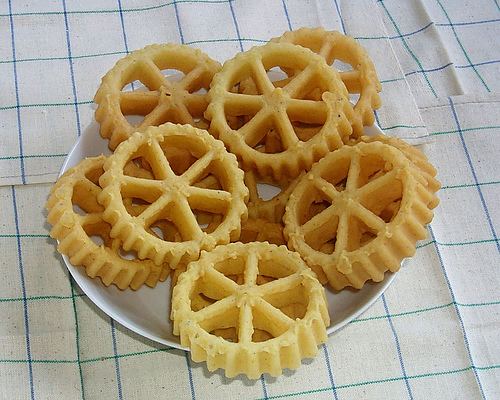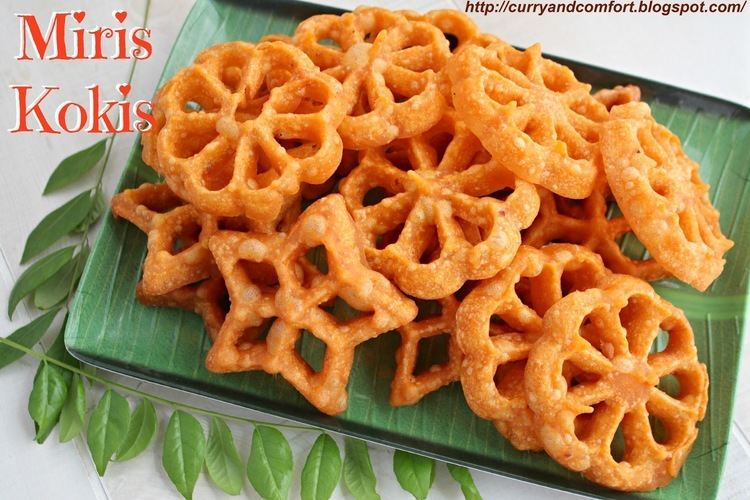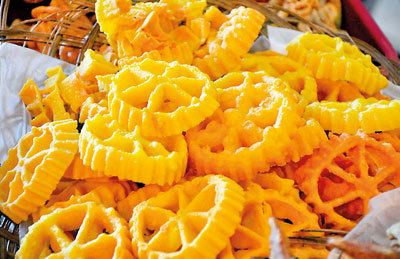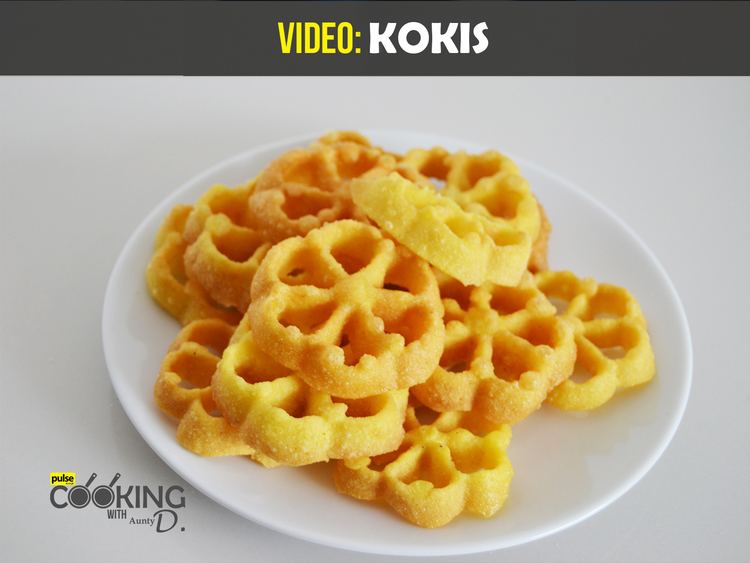Type Sweet | Course Dessert, Appetizer | |
 | ||
Main ingredients Rice flour, Coconut milk Similar Kiribath, Kevum, Aluwa, Kalu dodol, Lunumiris | ||
Sri lankan kokis
Kokis (Sinhalese: කොකිස්) is a deep-fried, crispy and sweet Sri Lankan dish made from rice flour and coconut milk. Although considered as a traditional Sri Lankan dish, it is believed to have come from the Dutch. This is an important dish when celebrating Sinhala and Tamil New Year and plays a major role in the festivities.
Contents
- Sri lankan kokis
- Kokis a classic sri lankan festive snack
- Etymology and history
- Significance during the Sinhala new year
- Description
- Health effects
- References

Kokis a classic sri lankan festive snack
Etymology and history

Although kokis is considered as a traditional Sri Lankan dish, it is believed to be of Dutch origin, from the time when parts of the country were under Dutch rule during the mid-17th century to the late 18th century. Its name may have been derived from the word koekjes, meaning cookies or biscuits in the Dutch language. The Swedish Rosette (cookie) & Persian Bamiyeh would be the most identical dishes for Sri Lankan Kokis.
Significance during the Sinhala new year

Sinhalese people prepare and consume a number of traditional dishes, including kokis, to celebrate their new year in mid-April. These are traditionally prepared by the women of the household, usually a few days before the new year. Nowadays however, they are made mostly by older women, as many people of the younger generation lack the time or the skill and knowledge required to make them due to their busy lifestyles.
Description
A special mold of decorative shape such as a flower is used to make kokis. This is called a kokis achchuwa (Sinhalese: කොකිස් අච්චුව). It is also called Rosette cookies in English. This mold is coated in a thick batter made from rice flour, coconut milk and beaten eggs. Sugar and salt may be added to the mixture as well. The batter-covered mold is dipped in boiling coconut oil, and the kokis is shaken off the mold and into the oil when it is half cooked and allowed to deep fry until ready. The cooked dish is crispy, and may be served hot or after cooling down. The oil is usually drained on paper before serving. It may also be prepared using wheat flour, as an alternative to the traditional rice flour.
Kokis may be consumed as a dessert, and also as an appetizer or snack. It is also commonly served with kiribath and other traditional sweets, which are collectively referred to as sweetmeats or rasa kavili (Sinhalese: රස කැවිලි), particularly at new year celebrations and other auspicious occasions.
Health effects
Like most of the traditional Sri Lankan sweetmeats, kokis is a food that has a high energy-density. As an oily and fatty food, there is a risk of it causing heart diseases and narrowing of blood vessels.
